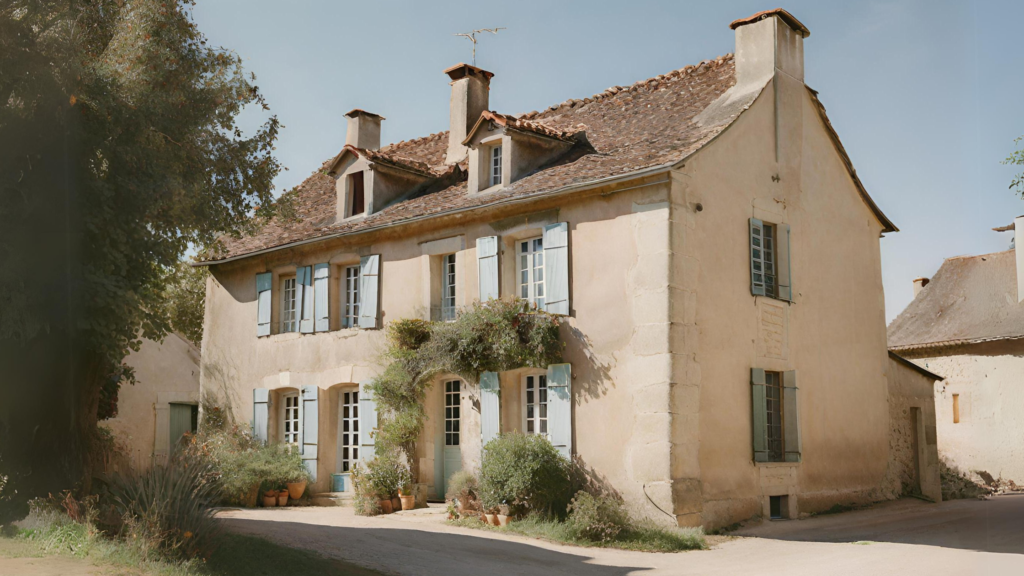
So you’re dreaming of a new life across the Atlantic. Maybe you’ve already decided to buy property in Europe but aren’t quite sure where to begin. For many Americans, the desire to buy property in Europe is stirred by visions of sun-drenched Tuscan villas, ivy-covered French stone houses, or terracotta-tiled apartments overlooking the Portuguese coast. Europe’s architectural charm and lifestyle allure are as powerful as its cultural complexity, and understanding that complexity is key to turning fantasy into a well-informed investment.
From the cobblestone streets of old-world capitals to sleepy mountain villages and seaside towns, the European real estate market offers something for nearly every taste and budget. But buying property in Europe is nothing like buying a home in the U.S. or Canada. The rules are different. The rhythms are different. And the legal frameworks, to put it mildly, might seem otherworldly. Whether you’re looking for a vacation home, a long-term relocation, or simply a hedge against American uncertainty, this guide will walk you through what it means to buy property in Europe versus the United States.
Europe: A Patchwork, Not a Blueprint
Let’s start with the obvious (right?): Europe isn’t a country. It’s a densely packed continent filled with distinct nations, each with its own language, laws, culture, and bureaucracy. To buy property in Europe is to step into a mosaic of individual markets—Spain is not Portugal, Portugal is not Italy, and none of them are France or Slovenia.
Even within the EU, a bloc often associated with unity, property laws vary wildly. The process of buying a farmhouse in rural France is vastly different from closing on a flat in central Berlin. While some countries welcome foreign buyers with open arms, others impose restrictions or require special permits. Land registration systems differ, as do tax policies, inheritance laws, and even the role of your realtor (or lack thereof).
If your goal is to buy property in Europe, the first thing to understand is that there’s no singular European way to do it. There are French ways, Spanish ways, Slovenian ways. And each requires localized knowledge and careful planning.
Lifestyle Matters: Europe vs. North America
When you buy property in Europe, you’re not just acquiring square footage—you’re buying into a way of life that, in many cases, contrasts sharply with what you’re used to.
Compact Cities and Efficient Transit
European cities were designed centuries before the invention of the automobile. The result? Walkable urban cores, narrow alleys, and excellent public transportation systems. In contrast to the car-centric sprawl of North American suburbs, Europe emphasizes density and accessibility.
More Vacation, Less Hustle
Work-life balance is more than a buzzword here. If you’re planning to buy property in Europe for a lifestyle change, know that Europeans typically enjoy more vacation time, shorter workweeks, and robust labor protections. It’s a culture that values leisure as much as productivity.
A Café Culture Built for Community
Whether in France, Italy, or Portugal, you’ll find a vibrant street-level culture of cafes, squares, and public life. Buying property in Europe often means living smaller indoors but larger outdoors, with the city itself becoming your extended living space.
History Isn’t Just in Museums
Every cobbled street, every church bell tower, every crumbling stone wall has a story. When you buy property in Europe, you’re buying into the history of the place too — literally. Daily life is steeped in layers of architectural, artistic, and political legacy. Which sometimes means old buildings, outdated infrastructure, and cramped spaces.
Apartment Living is the Norm
For many Americans, the idea of buying property means a detached home with a yard. But if you buy property in Europe, especially in urban areas, you’ll likely be looking at an apartment. This is both a cultural norm and a spatial necessity.
Historic city centers are dense, and preservation laws often prevent dramatic redevelopment. Apartment buildings, some centuries old, are designed to make the most of available space. These dwellings also foster community, as neighbors often share courtyards, stairwells, and even small traditions.
Outside of cities, however, standalone homes and small estates are more common — and often surprisingly affordable.
Buying Property: Step-by-Step Differences
The mechanics of buying property in Europe diverge significantly from what you’re used to in the U.S. or Canada.
1. The Role of the Notary
In most European countries, a notary is central to the transaction. In most European countries, notaries are more like a cross between a lawyer and a judge than the signature-witnessing role we know in the States. They verify ownership, taxes, debts, boundaries, and, essentially, execute contracts and purchase agreements.
2. Title Insurance? Not Exactly
Rather than relying on title insurance, European countries typically maintain centralized land registries or cadastres. These public records track ownership, easements, and liens—making the history of the property transparent.
It’s also important to note that most European countries don’t issue physical “titles” or “deeds” in the American sense. Instead, ownership is proven through notarized purchase contracts and entries in the local cadastre—a government-managed land registry. The cadastre not only reflects the current owner but also provides a detailed legal description of the property. While this may feel unfamiliar to North Americans, it’s a robust system that offers clarity and legal protection when properly managed.
3. Agents Can Represent Both Sides
While American realtors often work exclusively for buyers or sellers, many European estate agents handle both parties. This can streamline negotiations, but it also means you must do your due diligence to ensure your interests are protected.
4. Less Red Tape… Sometimes
In rural France or Portugal, you may be able to strike a deal directly with the owner, sign at the notary’s office, and move in within weeks. In cities like Paris or Amsterdam, however, competition is fierce and bureaucracy extensive. Buying property in Europe can be faster (or slower) depending entirely on where you’re buying.
Building a New Home? Prepare for Red Tape
Dreaming of designing your own European haven? It’s possible — but often complex. In many places, especially historic zones, strict zoning and aesthetic regulations apply. You might not be allowed to change the façade, modify the roofline, or even paint your shutters a different color.
European construction also emphasizes energy efficiency, durability, and traditional materials. Don’t expect a wood-frame house with vinyl siding in most places. Do expect layers of local permitting, a slower timeline, and, occasionally, charmingly eccentric contractors.
Buying Property in Europe: What You Need to Know
Here’s a summary of the key differences to keep in mind:
- Research Local Laws: There’s no “European” property law — only national and municipal laws.
- Hire Local Professionals: A local lawyer, notary, and certified translator are invaluable.
- Understand Taxes: From VAT to property and inheritance taxes, it pays to plan ahead.
- Expect Cultural Nuances: From negotiation etiquette to renovation schedules, local customs matter.
- Plan for Maintenance: Whether managing a rental or keeping up with local housing codes, factor in time and money for upkeep.
Most importantly: prepare for things to go sideways, and then sideways again. It’s all part of the ride.
Is It Worth It?
Absolutely. If you’re prepared. To buy property in Europe is to invest not just in real estate, but in a slower pace, a richer history, and a deeper sense of place. The process is more nuanced and often more opaque than in the U.S., but the payoff can be extraordinary.
Whether you’re settling in for a new life or simply building a sanctuary abroad, your journey to buy property in Europe can be both practical and poetic—an act of preservation, adventure, and personal growth.
And that’s how you begin to buy property in Europe! With curiosity, clarity, and a good bottle of wine on hand for the unexpected.
Bonus: A Quick Guide to Buying Property in Europe
- Choose Your Country: Match your lifestyle and investment goals to local markets.
- Know the Rules: Check for foreign ownership restrictions.
- Get Financing: Some countries offer mortgages to foreigners; others don’t.
- Hire Experts: Local agent, notary, and lawyer are essential.
- Do Your Due Diligence: Always inspect the property and check its legal status.
- Make the Offer: Be aware of local negotiation styles.
- Finalize at the Notary: This is where the real transaction happens.
- Register the Property: Ensure your name is on the local land registry.
- Settle In: Introduce yourself to neighbors and start enjoying la dolce vita.
